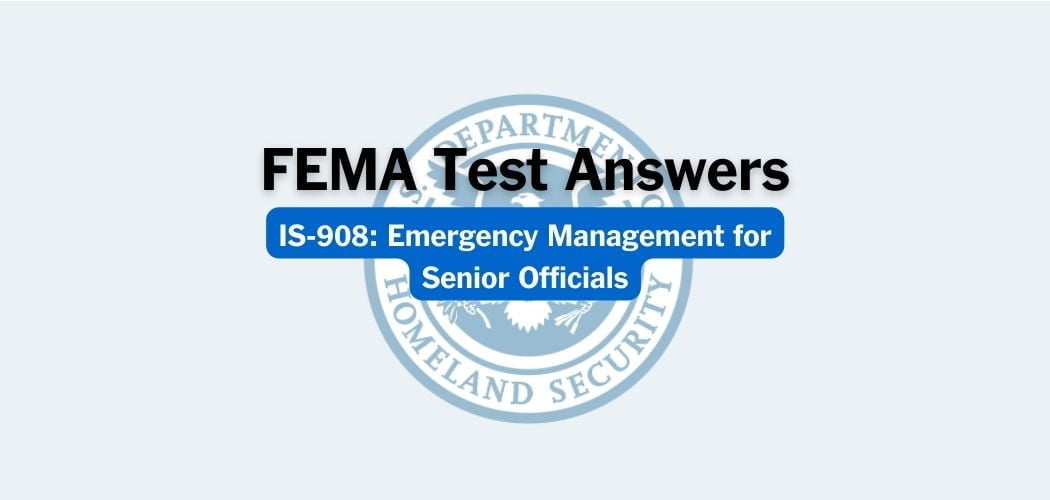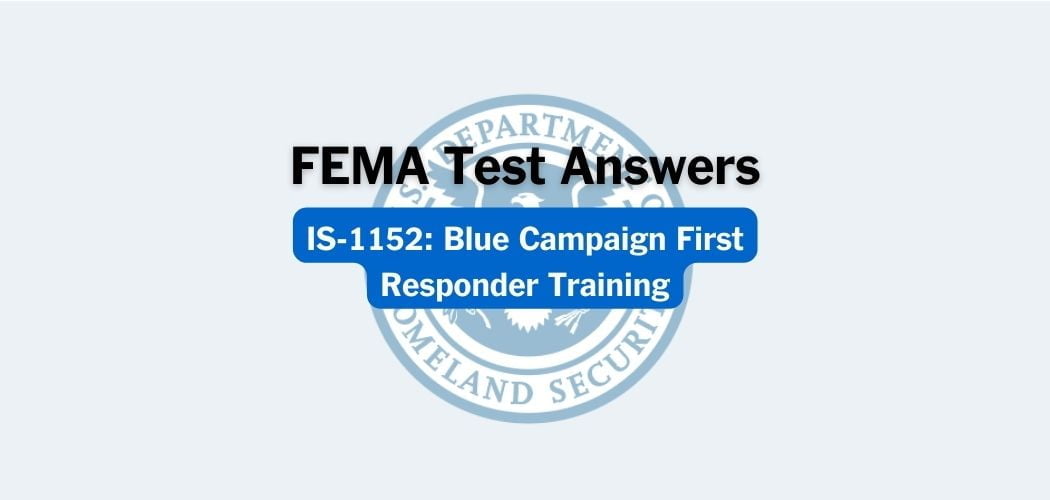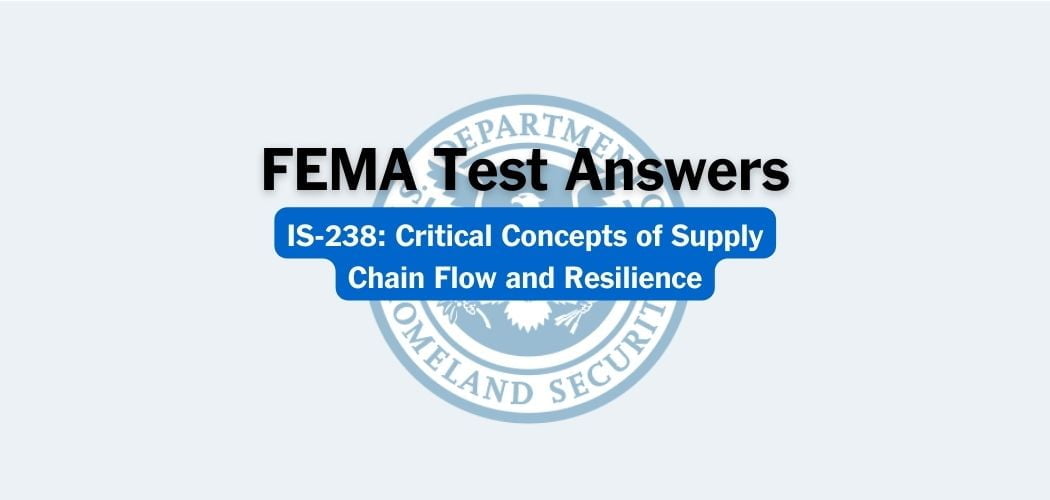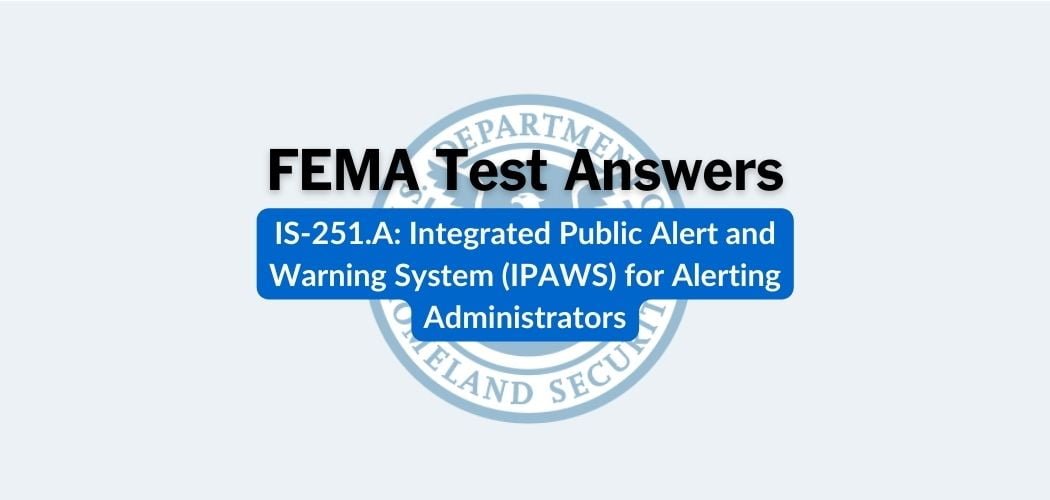IS-101.C: Preparing for Federal Disaster Operations: FEMA, is temporarily unavailable during course review and corrections. The exam will remain available for completion until November 11th, 2022.
FEMA IS-101.C test answers
Each time this test is loaded, you will receive a unique set of questions and answers. The test questions are scrambled to protect the integrity of the exam.
Question 1. Even given the critical nature of response work, overtime hours need to be authorized in advance.
A. True✅
B. False
Question 2. When should you submit travel vouchers?
A. Within 6 weeks of demobilization✅
B. Within 2 weeks of your deployment
C. Within 5 days of your deployment
D. Before you deploy
Question 3. It is unnecessary to notify Deployment Unit if the only change in your status is the hotel where you are staying.
A. True
B. False✅
Question 4. Upon arrival at the assigned incident facility, your first priority should be to:
A. Talk with the Incident Commander to find out how you can help.
B. Complete the check-in process.✅
C. Obtain any needed equipment from the Logistics Section.
D. Contact your family to let them know you’ve arrived safely.
Question 5. You may be monetarily liable if you neglect to return all issued equipment at check-out to the Logistics Section Accountable Property Specialist.
A. True✅
B. False
Question 6. Where in your assigned incident facility would you go to obtain current incident status information?
A. Finance and Administration Section
B. Logistics Section
C. Planning Section
D. Operations Section✅
Question 7. Under the Stafford Act declaration process, who requests Federal assistance?
A. Governor of the State✅
B. Mayor of the jurisdiction
C. Local emergency manager
D. FEMA Administrator
Question 8. Who within the field-level facility responds to accidents, illnesses, injuries, and other incident emergencies?
A. Human Resources Specialist
B. Safety Officer✅
C. Chief of Staff
D. Security Manager
Question 9. There are instances when it is advisable for you to travel to the incident site as soon as possible, whether or not you’ve been deployed.
A. True✅
B. False
Question 10. When receiving equipment, you should examine and inventory each item to make sure it is all in your possession and in working order.
A. True✅
B. False
Question 11. After establishing communications with the affected State emergency management agency, the Regional Response Coordination Center (RRCC):
A. Works with local jurisdictions to identify financial needs for recovery.
B. Develops initial Federal objectives and deploys resources.✅
C. Assumes command of the incident scene operations.
D. Reports on the overall national emergency management priorities and actions.
Question 12. FEMA’s policy of nondiscrimination can be summarized as providing all disaster survivors with the same amount of financial assistance.
A. True
B. False✅
Question 13. When communicating with a disaster survivor whose English proficiency is limited, it helps to repeat information loudly and slowly.
A. True✅
B. False
Question 14. Emergency Support Functions (ESFs) deliver a broad range of technical support and other services at the national, regional, and field levels.
A. True✅
B. False
Question 15. To comply with the Freedom of Information Act, you are required to disclose the names of disaster survivors when requested.
A. True✅
B. False
Question 16. You may use your Government Credit Card for purchasing nonreimbursable personal items during a deployment.
A. True
B. False✅
Question 17. You see an unknown individual approaching your workstation without a badge. When asked, the individual is unable to show you proper identification and becomes irate. You should:
A. Report the situation to the Security Manager.✅
B. Tell the individual to leave the facility immediately.
C. Assume that someone else will deal with the issue.
D. Ask the individual to show you his or her driver’s license.
Question 18. Though the Joint Field Office (JFO) uses an Incident Command System structure, the JFO does not manage on-scene operations. Instead, the JFO focuses on providing support to on-scene efforts and conducting broader support operations that may extend beyond the incident site.
A. True✅
B. False
Question 19. All of the following are useful for remaining calm and making effective decisions in the stressful, fast-paced environment of incident facilities, EXCEPT FOR:
A. A sense of optimism and humor
B. Input from supervisors and coworkers
C. Caffeine and other energy supplements✅
D. Persistence through adverse conditions
Question 20. Where in your assigned incident facility would you go to check in, resolve personnel issues, or receive training?
A. Finance and Administration Section
B. Logistics Section
C. Planning Section
D. Operations Section✅
Question 21. A basic premise of both the National incident Management System (NIMS) and the National Response Framework (NRF) is that:
A. Incidents should be managed at the lowest jurisdictional level possible.✅
B. Federal assistance is designed to supplant rather than supplement State and local resources.
C. Government officials should strive to manage incident response without involving others.
D. The use of standardized processes, such as the Incident Command System, is limited to large, complex disasters.
Question 22. One core ethical concept is that you need to act impartially and not give preferential treatment to any private organization or individual.
A. True✅
B. False
Question 23. Why would a community member go to a Disaster Recovery Center?
A. To receive training to be part of a Federal response team.
B. To be able to get shelter prior to the landfall of a hurricane.
C. To get medical treatment following a major disaster.
D. To get information about disaster assistance programs.✅



